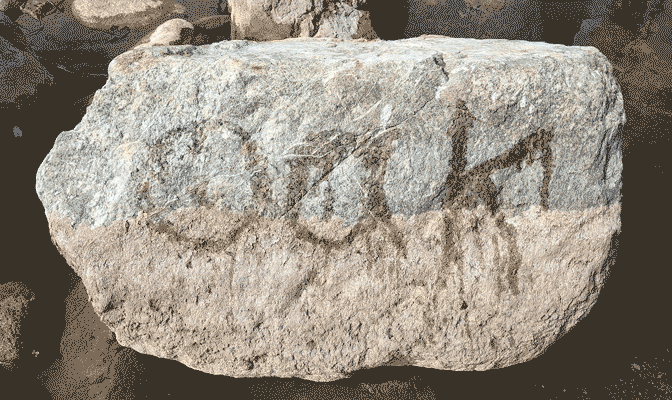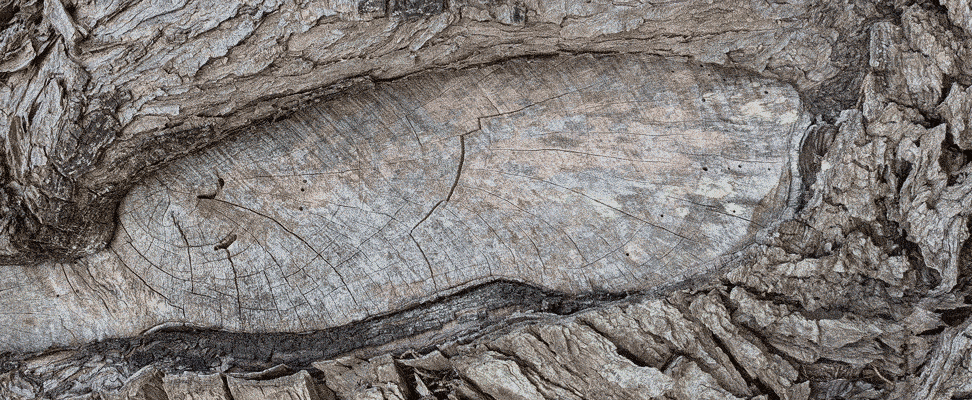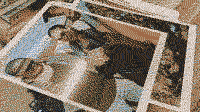Ilia: Thanks for joining us today. We’ve been talking a lot about this idea of a “field trip,” especially in the context of an environmental art practice. Jonas, you’ve just come off a pretty intense field-based class. You mentioned traveling all over California, unexpected detours, and record-breaking heat. Could you tell us a bit more about that experience?
Jonas: Sure. The class was a three-week field course, and we basically spent the entire time traveling around California to different ecosystems and research sites. It was wild. We were supposed to go to the Mojave Desert, to the Granite Mountains Reserve. But the heat got so intense—like 117 degrees Fahrenheit—that one of the station managers and her family had to evacuate. It just wasn’t safe to stay out there. We had to change plans last minute, and that happened more than once. At another point, we tried heading to Sequoia National Forest, but a wildfire had just erupted right where we were going. So, we turned around, drove all the way back to Santa Cruz in one long day, and ended up camping on the campus quad. It was chaos at times, always responding to climate and other unexpected conditions.
What was beautiful, though, is we ended up spending a whole week at the Big Creek Reserve on the Big Sur coast, which turned out to be really special. The road there had been hit by landslides, huge boulders the size of houses coming down. Even watching the landscape reorder itself was incredible. We saw that constant unpredictability, this sense of always being in response to the land rather than dictating what we do.
Jorge: That sounds pretty intense. You’ve been working on your own projects related to rivers, salmon, and environmental issues. Did this class, this whole messy, improvised journey, help you think about your other work—like the fellowship you have, the Norris Grant, and your thesis project?
Jonas: Absolutely. Honestly, before this trip, I’d been feeling really contorted, like I was trying to force my thesis or fellowship project into a predefined shape that just didn’t fit. For a while now, I’ve been fixated on doing meaningful work around salmon and rivers. Coming from Alaska, I have a personal investment in these subsistence fishing traditions, in rivers, in salmon runs. I’d set up these rigid expectations: I need to go to this particular river at this particular time, coordinate with communities there, achieve this grand plan. But those communities, the weather, the rivers—they don’t follow academic schedules. They don’t line up neatly with my constraints.
This field course was a huge relief. It reminded me that working directly with landscapes means accepting that they have their own timelines and contingencies. We got diverted so many times. One moment stands out: I tried to meet up with a collaborator in Eureka, and she wasn’t available; the timing just didn’t work. Though I was disappointed that things didn’t go as planned, the next day we took a different turn and ended up at a general store along the Lost Coast. There, I met a random guy named Yessi who started telling me about people in the next valley over who just reviving a salmon ceremony. The main line of work in the whole valley is revolves around the salmon restoration efforts. In not forcing a plan, I stumbled into something more intuitive, more alive. I realized I don’t have to contort myself into one story. I just have to be open and responsive, to trust that other stories and connections will emerge.
Ilia: That brings us to the idea of a “field trip” itself. We think of a field trip as leaving the classroom to experience something more direct and primary. Jonas, how would you define a “field trip” in the context of your artistic and environmental work?
Jonas: A field trip, at its core, means leaving your familiar environment—leaving that space of theoretical abstraction—and going out into the world. You cross a boundary. You’re no longer in a controlled, secondary environment where knowledge is curated. Instead, you’re in direct contact with something primary: the land, the water, the climate, the communities who live there. It’s about stepping into environments where you’re more vulnerable and less certain.
A field trip also involves travel and directionality. You go somewhere else, beyond your routines. It’s not just about observing; it’s about immersion. You open yourself up to the unexpected. Things can go sideways—like our class repeatedly had to reroute. That’s generative, though. Being in the field is not just about confirming what you think you know; it’s about responding to what’s actually happening. Like we were going to go camping in Covelo, and it was too hot, so there was a lot that literally had us go sideways – and there’s a certain tension that comes with being prepared and aware in a reactive state, where you’re encountering something new and having to be prepared to respond.
There’s a vulnerability, a foreignness, in that. You leave behind your home base, your comforts. You become a guest in someone else’s environment, and that makes you more sensitive, more attuned. When you’re out there, you can’t impose your own rules as easily. You have to adapt, listen, and let the landscape and the community guide your understanding. That’s the heart of a field trip for me—an encounter that can’t be neatly scheduled.
Ilia: You mentioned vulnerability, being a foreigner crossing a border. One of our references suggests that making art or writing is akin to crossing a border, entering a space where you’re a stranger. Does that resonate with you, as you think about field trips and your work?
Jonas: It does. Entering an environment you don’t fully know puts you in a position of uncertainty and vulnerability. But that vulnerability can open you up. Instead of imposing your preconceived notions, you lean in, get curious, and let the experience shape you. You end up forming relationships not just with people but with the environment itself. For instance, on this trip, we often went swimming. Every new place—whether an Alpine lake, a coastal lagoon, or a swampy pond—became a site of immersion. Literally immersing ourselves in water became a metaphor for immersing ourselves in that environment’s logic. It’s about trust. Jumping into a pond full of aquatic plants and weird smells means surrendering your expectations and letting the place teach you something.
So yes, that border-crossing idea applies. You step out of your comfort zone and into a zone of direct experience. If you do it openly, you gain insights not by extracting information but by participating in the life of that place. You become a collaborator rather than a conqueror.
Jorge: You mentioned the physical intimacy of these experiences—like swimming—and how it fosters a certain openness to both landscape and people. Can you talk more about how these physical engagements shape social relationships and trust?
Jonas: Physical immersion changes how we relate to each other. Imagine a group of people traveling together, facing 117-degree heat, sleeping under the stars, scrambling over fallen logs, wading up rivers. These shared hardships and joys create camaraderie. You rely on each other for water, shade, navigation, safety. Suddenly, you’re not just students or colleagues; you’re companions in a living landscape that demands mutual care.
I saw it when we had to ask strangers for help—like filling up our water bottles at someone’s hose in a remote valley. Those strangers engaged with us kindly because we presented ourselves as learners, as people who care about where we are. Or at Big Creek Reserve, we got to know the staff who live and work there. We invited them to share dinner, learned about the local flora and fauna. The landscape’s constraints and wonders bring people together, soften boundaries, and encourage trust.
This trust also extends to non-human relationships. Being in a river, figuring out how to move around boulders and plants, puts you in conversation with that environment. It’s subtle but real. You develop an embodied knowledge of that place, which, in turn, influences how you interact with the people there. Everything interweaves.
Ilia: There’s this recurring theme of not forcing things—trusting the process, trusting the place, even trusting that images will come when they want to come. You mentioned feeling relief at not having to contort your practice. Can you elaborate on how this trip changed your approach to photography?
Jonas: Before, I thought I had to produce something significant right away—like prove my worth as an artist by crafting a perfect project tied to a particular narrative. But on this trip, we had no strict assignments. We just had cameras, time, and a landscape. Jack, the instructor, basically said: “Show up, pay attention, and photograph as it feels right.”
This open-endedness reminded me that photography doesn’t define me; I define my photography. My camera is a tool to engage with what’s already meaningful to me. I don’t have to “capture” a place; I can respond to it. If a picture doesn’t turn out how I expected, that’s fine. It’s like picking berries—if they’re not ripe yet, you wait, you trust. The best images emerge from honest, present relationships with place and time.
This shift helps me resist the pressure to create on demand. It’s a reminder that my strengths as a photographer come from being responsive, curious, and connected, not from imposing a preconceived vision.
Jorge: This resonates with the concept of “harvesting” you mentioned. You compared collecting experiences and images to gathering salmon or berries—trusting seasons and natural cycles. Could you talk more about that metaphor?
Jonas: In Alaska, salmon return every year, offering themselves as a gift if we respect them. Harvesting is a communal, respectful process. We fillet the fish, preserve them, share them. It’s about trust: trusting that the salmon will come back, that the river will continue its cycles, that we can live sustainably with these rhythms.
Likewise, in my art practice, I’m not manufacturing images out of thin air. I’m harvesting them from the experiences and relationships I cultivate. If I try too hard to force images when they’re not “in season,” I’ll just produce something sour, unripe. If I wait, stay open, and trust the relationships I’m building—with rivers, with landscapes, with communities—then the work I produce will feel more authentic, more nourishing.
It’s a patient practice, accepting that some years the salmon run might be weak, some seasons might not yield what I hope. But over time, these encounters, these incremental understandings, accumulate into a meaningful body of work—like a full freezer at the end of the fishing season. That’s what I hope to bring back to Alaska: a metaphorical larder of experiences, images, and insights that will sustain me and my community.
Ilia: That’s a powerful image. There’s also the question of environmental activism and complexity. You visited places like Manzanar, confronted histories of violence, displacement, and propaganda. How do these more charged encounters influence your understanding of field-based art?
Jonas: At Manzanar, we confronted a place where Japanese Americans were forcibly interned during World War II. Some of my classmates had direct family connections to this history. Standing there, it wasn’t just about observing the environment; it was about facing layers of history, trauma, and ongoing narratives. The Park’s exhibits had their own framing, sometimes feeling sanitized or incomplete. We saw tourists making dismissive comments. It was tense, emotional.
In these moments, the field trip becomes a complex social encounter, not just an environmental immersion. We realize landscapes are not neutral. They carry scars, memories, contested meanings. As artists, we can’t just celebrate the land’s beauty; we must also address its histories and how power structures have shaped it. This demands sensitivity, humility, and again, trust. Trust in our classmates, trust in open dialogue, trust in the hard work of acknowledging uncomfortable truths.
Similarly, at Big Creek, the intense monitoring of the environment by scientists and the University shows that landscapes are managed and contested. Land is always political. Our job isn’t to simplify that but to be honest with it, to dwell in the complexity and let it inform our art.
Jorge: So, going forward, how do you bring all these lessons back to your ongoing work? You’ve mentioned Alaska, salmon, your original motivations. Has this experience changed your direction or simply reaffirmed your initial instincts?
Jonas: It’s reaffirmed that I don’t need to force my original plan into a rigid form. I got interested in California rivers because I already cared about an Alaskan river. Realizing that I don’t have to stage some grand project here that perfectly aligns with deadlines is freeing. I can let these field experiences—talking to people about salmon ceremonies, seeing landscapes regenerating after landslides—inform and deepen my understanding of what it means to live in relationship with watersheds.
When I return to Alaska, I’ll come back with a broader perspective. I’ll carry these lessons of adaptation, vulnerability, and trust. I’ll remember that good art, like good harvesting, follows natural cycles. I’ll keep learning from the people, the places, and the ecologies I engage with, allowing projects to unfold as they need to.
Ilia: You’ve spoken about how the program and the cohort have been essential. The institution might not give you all the practical skills you expected—like how to print perfectly or navigate the art market—but you’ve formed meaningful relationships and learned from peers. Does that interpersonal dimension also feed into your field practice?
Jonas: Absolutely. The most valuable part of this MFA program has been the relationships. The cohort, the faculty, the people we met in the field—these interactions shape how I think and feel. It’s not just about picking up technical skills; it’s about seeing how different people approach the world, their differing methods of making art, of relating to land, of building trust.
These relationships are like seeds. They’ll germinate and grow even after I leave. The trust we build with each other encourages me to trust in the environments I work with. The empathy we show one another translates into empathy for the places and communities we enter. It all loops back.
Jorge: That sense of interconnectedness, of learning together, seems central to how you’re reimagining your practice. Before we wrap up, do you have any final thoughts on what it means, as an environmental artist, to step out into the field, to leave the classroom, and to trust what emerges?
Jonas: I think it’s about accepting that you’re never fully in control. A field trip isn’t about confirming your preconceived notions; it’s about letting the environment surprise you, sometimes frustrate you, and teach you. It’s about being vulnerable enough to let a place and its people change your thinking. It’s also about patience, waiting for the metaphorical salmon to return, for the berries to ripen, for the images to form naturally rather than being forced.
The environmental stakes are high. Climate change, fires, displacements—these aren’t theoretical. But engaging directly can foster resilience, humility, and clarity. We learn to navigate uncertainty. We learn that creativity thrives on trust, care, and a willingness to adapt.
In the end, this approach can produce more honest, grounded art. It’s less about heroic narratives and more about being part of a larger system of relationships. That’s what I’m taking with me: a sense that good work arises from acknowledging complexity, embracing vulnerability, and letting landscapes guide the story.
Ilia: Thank you, Jonas. Your reflections resonate powerfully. Jorge, thank you for joining as well. This conversation has touched on trust, vulnerability, field-based learning, and the art of waiting and responding rather than forcing. It shows that leaving the classroom isn’t just a spatial move; it’s a conceptual, ethical, and emotional shift. We’re grateful for your insights.
Jorge: Likewise. It’s inspiring to see how your journeys—geographical, intellectual, and emotional—inform your practice. The field trip emerges not as a neat excursion but as an ongoing, living process. Thanks for sharing these experiences, Jonas.
Jonas: Thank you both. It’s been helpful to articulate all this. I’m looking forward to what comes next, wherever the rivers lead.



